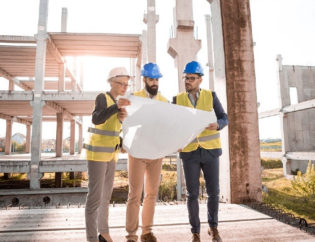
Modular structures are growing in demand in Canada. Modular buildings are prefabricated buildings that are manufactured in factory-settings, delivered to the predestined location, and the components are assembled together. Talking about the modular construction method, there are two types of modular structures – permanent and temporary modular structure.
Are you considering modular construction for your next project and confused between a permanent and temporary structure type? If you are then, here are a few distinctions for you to make the right decision.
Permanent Modular Structure |
Temporary Modular Structure |
|
| Purpose | Permanent structures are best used for projects with continuous need and usability that do not need to relocate. These structures act as standalone buildings such as banks, retail spaces, schools, etc. Permanent structures can easily blend in with the architecture and the colour of conventionally built edifices. | A temporary structure can be used for a number of specific purposes. You can construct a building in areas where there is a need to erect a structure immediately or for projects that require frequent relocation. For instance, temporary modular structures can be used during natural disasters to provide housing and emergency medical facility to save lives. They can also be used as new additions to schools or hospitals to accommodate a number of children or people. |
| Costs and Real Estate | Permanent modular buildings are more expensive than temporary modular buildings. You can find long-term or on-going leasing options for a permanent modular building. Permanent structures offer additional investment real estate benefits, hence increasing the property value over time. | Temporary modular units cost less than the permanent modular units. It is easy to rent, lease, or purchase a temporary modular building. Since these temporary units can easily be relocated, they are not permanently fixed to the property. As a result, these units are considered as personal property. Therefore, the value of the units depreciates over time. |
| Personalisation Options | Permanent modular buildings can allow you to custom design the building to finish your architectural specifications. These buildings offer the same structural freedom and customisation options like the ones with the conventional building. | When it comes to aesthetic appeal, a temporary modular structure offers limited options. These buildings have a pre-designed layout and provide limited customisation options. |
| Building Materials | Since permanent modular buildings are intended for longer use, there are made of concrete and steel in addition to wood. Modular manufacturers offer a wide range of choices to customise your modular structure to meet the demands similar to a conventional building. | Most of the temporary modular buildings are made of wood to easily relocated to other areas. These structures need to be made with lighter materials to meet the demands for temporary purposes. |
| Installation and Relocation | A permanent modular structure is intended for stationery and permanent use. These buildings are subject to identical inspection and maintenance practices as the one with the traditional building. | If you are looking for a structure that can easily be relocated, then a temporary modular structure is suitable for your needs. Temporary modular structures are durable and enough to withstand several rounds of installation and relocation process. |
| Customisation to Existing STructures | Permanent modular buildings are built and attached to the existing structure to match the existing structures. The modular structure matches the structural and technological details of the existing structure. | Temporary modular structures cannot be directly connected to the existing structure. These structures usually do not focus on the aesthetic aspect as they are used to meet the temporary demands. Therefore, the structures are not able to comply with the existing structure architecturally. |
| Duration of Construction Process | Permanent modular construction takes around 2-4 months or even more depending on the scope of the installation process required on the site, the size of the building, and the architecture. | Temporary modular construction takes 30-40 days, no matter how big the project is. |
| Durability | Permanent buildings can last for decades and can be indistinguishable told from conventional construction. As these structures are installed and fabricated for long term use, they tend to last for decades. With the right usage of materials and assistance from the experts, you can easily extend the life of the permanent structure. | If you intend to have a building for a specific purpose, the temporary modular building will serve the purpose for only a few months or a few years (with proper maintenance). Though there are limited options to make the temporary structure, depending upon the needs and how the structure is handled, you can extend the life of the structure. |
| Requirements | Permanent modular buildings need the land to assemble the components. Since the structure needs a foundation, you need to meet the building codes made by the federal, state, and local laws. | Temporary structures do not need any foundation and can be assembled on the site directly. Since the components are manufactured in factory settings, the structure already meets the code of building made by the federal, state and local authorities. |
The popularity of modular structures is growing rapidly, thus enhancing the building design, procurement, and construction. Now that you are aware of the differences between temporary and permanent construction, it is important to choose the right type of construction method based on the criteria for your business. If your business demands permanent or temporary need, you need to choose the right structure that best suits your needs. Therefore, whatever type of structure you choose, you are still opting for modular construction. Therefore, there is no way that you are going wrong with your decision.









